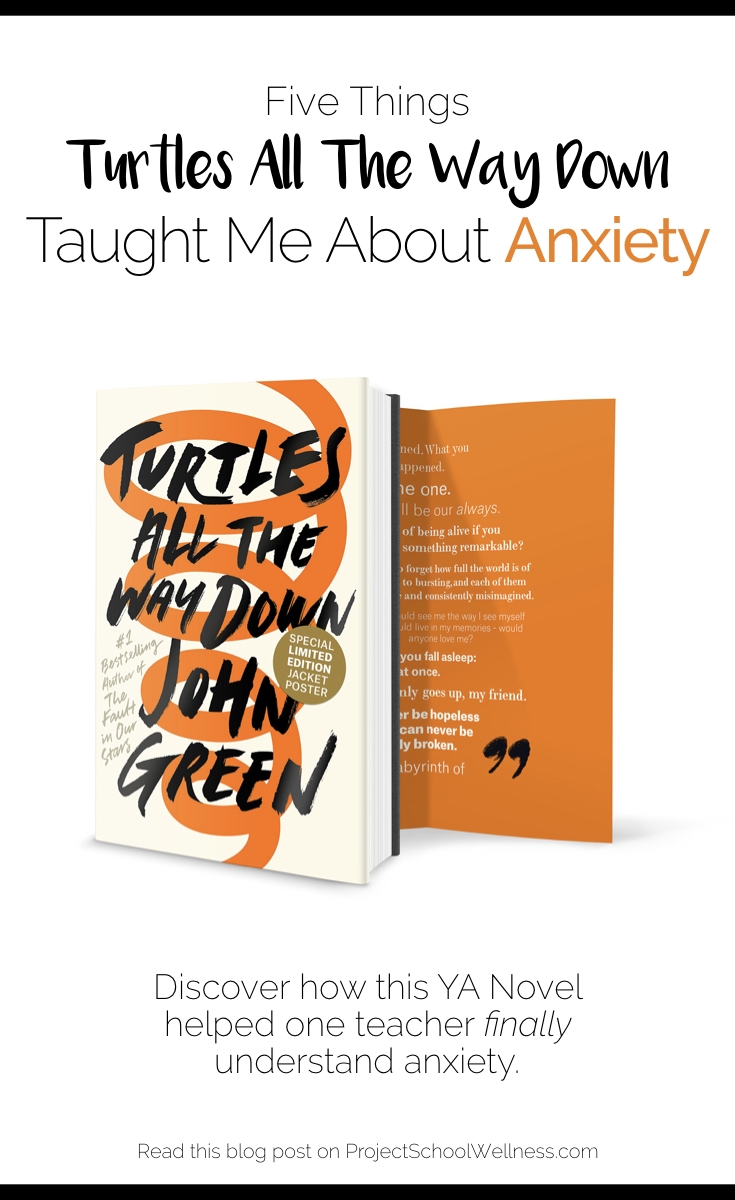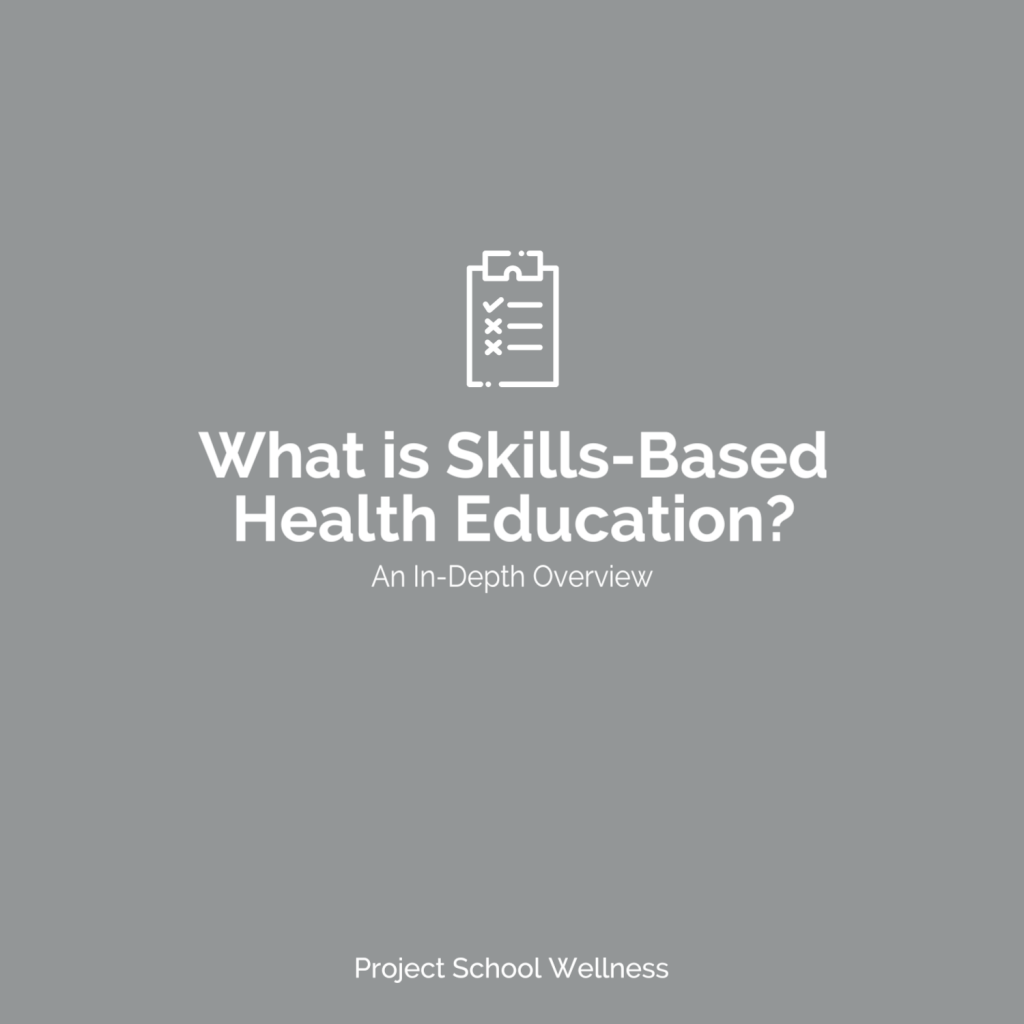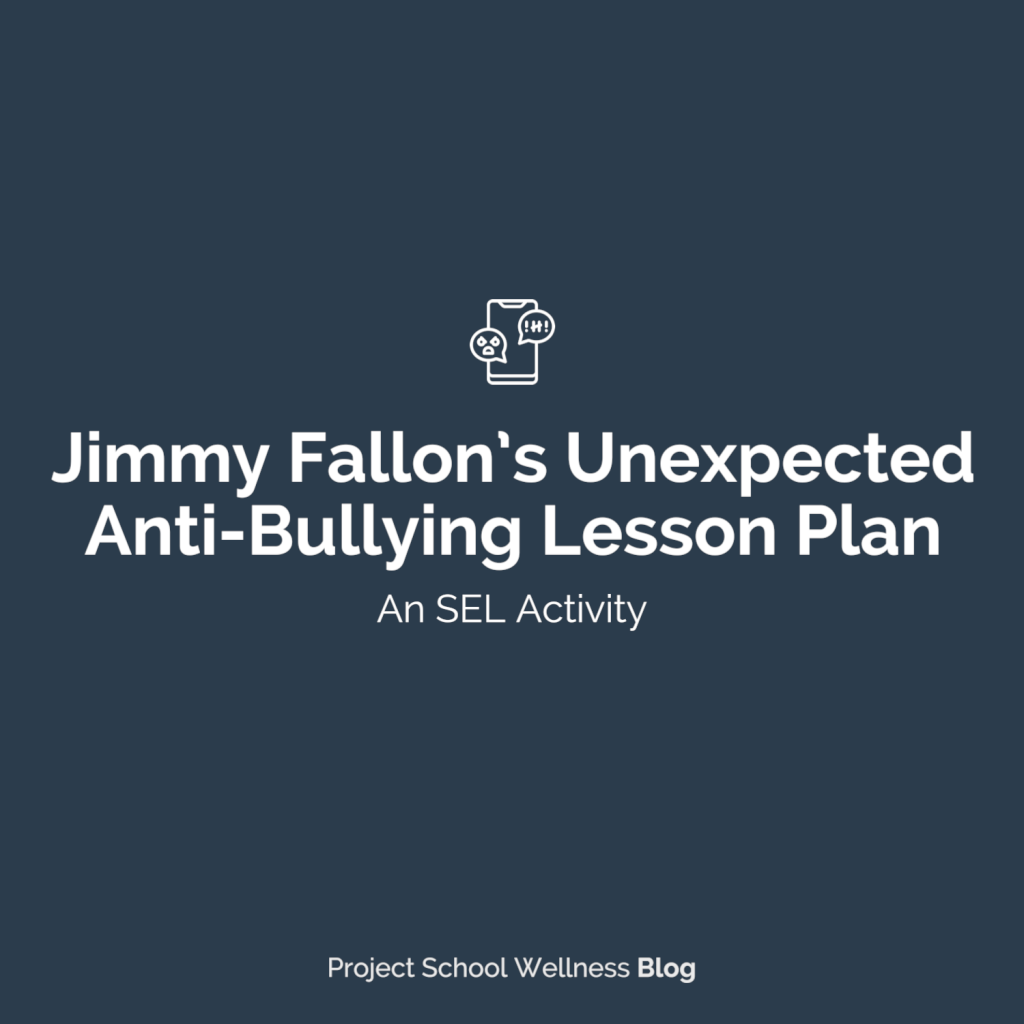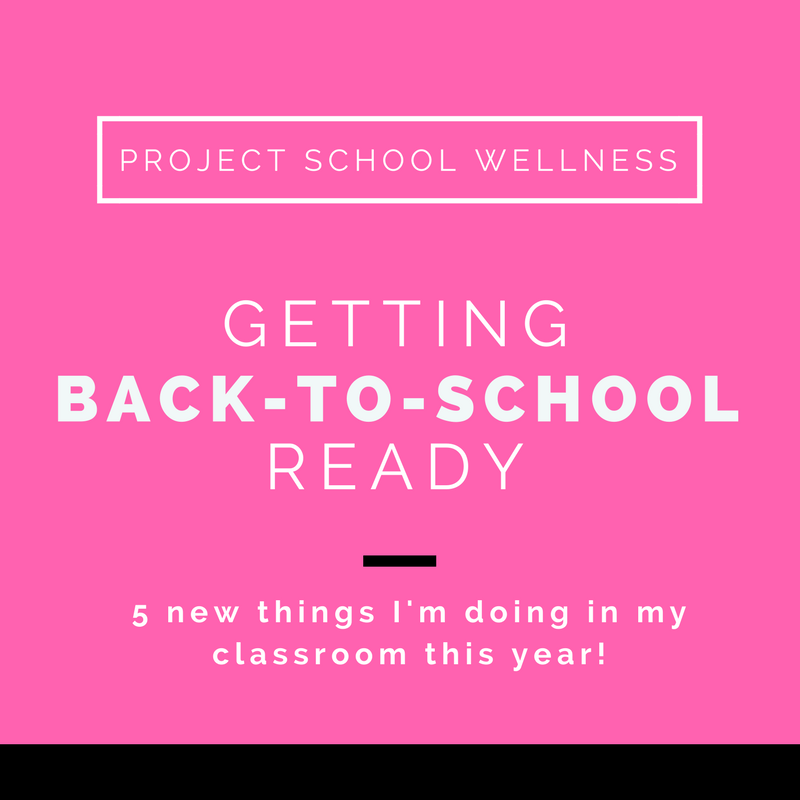Turtles All The Way Down
How a YA Book Helped Me Finally Understand Anxiety
I failed my students
I'm not gonna sugarcoat it. I've failed my students*. And up until a few months ago, I had no real understanding of anxiety (and I still have so much to learn) and the toll it plays on a person. Sure, I would act as though I understood my students, all the while thinking (and getting increasingly more annoyed)...
- "Come on, just get over it."
- "Calm down; you're overreacting."
- "Just stop thinking about it."
- "Be realistic, that's never gonna happen."
Just writing my played out responses pains me. How could I be so dismissive and insensitive to my students as they experience unrelenting mental illness?
>>> Mental Health Vs. Mental Illness, And Why Understanding the Difference Matters
Five Things This YA Novel Taught Me About Anxiety and Mental Illness
John Green is an incredibly talented writer. Fault in Our Stars is truly one of my favorite books. Ever. Once again, in his latest novel, Turtles All The Way Down, he captivated me and opened my mind to a world I previously misunderstood and frankly knew little about.
Meet Aza, our narrator. She's a typical high schooler who happens to be a mission with her best friend, Daisey, to solve a missing person case. Oh, and she also suffers from chronic anxiety and OCD.
Upon entering her mind, readers are offered a beautiful and rare chance to see the world from her point of view. She provides a reminder of what it was like to be a teen (oh how easily we seem to forget) and an opportunity to understand what it means to live with mental illness.
I'm not exaggerating when I say this book changed me. It granted me desperately needed insight. Here are five key things I learned about anxiety.
#1: Unrelenting Intrusive Thoughts
How is it possible that I've been teaching students with anxiety for five years and never once heard the term intrusive thought? Intrusive thoughts are "thoughts that enter your consciousness, often without warning or prompting, with content that is alarming, disturbing, or just flat-out weird (source)."
We all have them (as Aza shares below), but for most, it's a fleeting thought. However, for some, thoughts like this latch on and invade the mind.
“I have these invasive thoughts that Dr. Karen Singh calls ‘intrusives,’ but the first time she said it, I heard ‘invasives,’ which I like better, because, like invasive weeds, these thoughts seem to arrive at my biosphere from some faraway land, and then they spread out of control. Supposedly everyone has them - you look out from over a bridge or whatever and it occurs to you out of nowhere that you could just jump."
Aza, Chapter Five
"And then if you're most people, you think, Well, that was a weird thought, and move on with your life. But for some people, the invasive can kind of take over, crowding out all the other thoughts until it's the only one you're able to have, the thought you're perpetually either thinking or distracting yourself from."
Aza, Chapter Five
#2: It's Not a Matter of Choice
Mental illness is not a choice. Of course, this is something I've claimed to understand. However, that's all it was, a claim. But after being inside Aza's mind along with experiencing my own bout of postpartum anxiety, I now truly understand and believe that it's not a choice.
Yes, we have a choice in how we respond. But as the book often declares, we do not choose our thoughts.
"You can't choose. That's the problem."
Aza, Chapter Six
“The way he talked about thoughts was the way I experienced them – not as a choice but as a destiny. Not a catalog of my consciousness, but a refutation of it.”
Aza, Chapter Six
#3: In a Tightening Spiral With No Escape
Throughout the book, Aza talks about how her thoughts are like a spiral. A spiral that is ever tightening with no end. I found this imagery enlightening. As I pictured a spiral, I could imagine the feelings of entrapment and lack of control being stuck in the infinite swirl with no way to escape.
"The thing about a spiral is, if you follow it inward, it never actually ends. It just keeps tightening, infinitely."
Aza, Chapter One
"The spiral tightens, like that, forever."
Aza, Chapter Five
"I have these...thought spirals, and I can't get out of them."
Aza, Chapter Twelve
#4: When You Know Something's Wrong, But You Can't Fix It
I'm not proud to admit, there have been times in the past when my patience runs thin. I want to tell my students to stop feeling anxious. And I question if it's just a lack of effort hindering progress.
How I recoil when I think of how grossly I misunderstood and misjudged my students. Would I ask a person with cancer to just stop having cancer? Would I judge a person with a broken leg when they cannot will their bone to heal itself?
"It’s so weird, to know you’re crazy and not be able to do anything about it, you know? It’s not like you believe yourself to be normal. You know there is a problem. But you can’t figure a way through to fixing it."
Aza, Chapter Seventeen
#5: It Takes Courage
Aza's story has taught me a lot. Most of all, it can never be doubted that living with any mental illness takes courage. More courage than I could ever imagine.
“...We refer to it with catch-all terms, like crazy or chronic pain, terms that both ostracize and minimize. The term chronic pain captures nothing of the grinding, ceaseless, inescapable hurt. And the term crazy arrives at us with none of the terror and worry you live with. Nor do either of those terms connote the courage people in such pains exemplify..."
Dr. Singh, Chapter Eight
Forever Changed and Infinitely Grateful
It's not possible for me to fully grasp and understand anxiety and OCD by just spending 286 pages with Aza Holms. And I definitely would never claim to be an expert in the matter. But I can say, with confidence, that Aza's story has changed me. Her journey has gifted me insight into a life I once greatly misunderstood.
Green has nurtured empathy and understanding, forever changing the way I think about and relate to my students. And for that, I am infinitely grateful.

* I know some students who will say and do anything to get out of work. But this post isn't about them. This post is about students who are truly experiencing anxiety and how to understand them better. This also isn't a post about why students have anxiety. I am not a mental health professional and not qualified to speak on those matters.

Free Curriculum Sample
Sign up to receive 11 free heatlh lesson plans from the Project School Wellness Curriculum!
Hello. I'm Janelle!
A middle school health teacher turned curriculum developer. I'm on a mission to share the easiest-to-teach, most impactful health lesson plans on the Internet. Because your time and energy is better spent on teaching and connecting, not on planning and prep.





